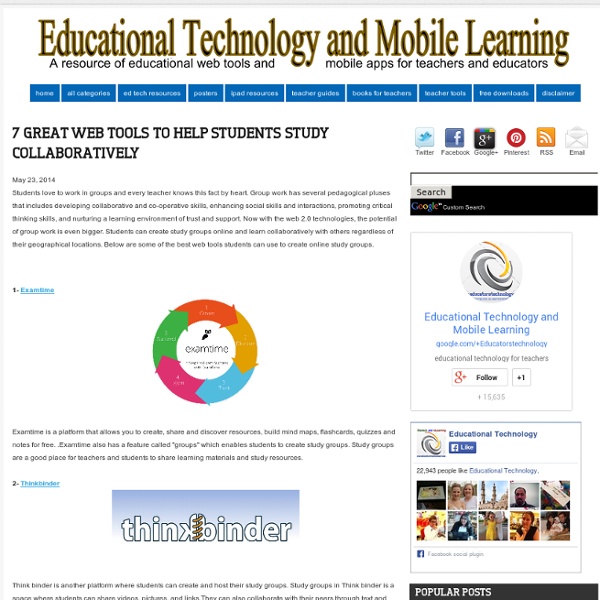7 Great Web Tools To Help Students Study Collaboratively

MOOCtalk | Let's teach the world
European Journal of Open, Distance and E-Learning
Dorothy C. Kropf [Dorothy.Kropf@waldenu.edu], Walden University, 100 Washington Avenue South, #900, Minneapolis, MN 55401, United States of America [ Transformed into a large collaborative learning environment, the Internet is comprised of information reservoirs namely, (a) online classrooms, (b) social networks, and (c) virtual reality or simulated communities, to expeditiously create, reproduce, share, and deliver information into the hands of educators and students. Keywords: connectivism, e-learning, information repositories, learning theory Siemens (2008) suggested that modern day learning occurs through network connections as individuals share their interests, knowledge, perspectives, expertise, and opinions in online or virtual learning environments (Dunaway, 2011). Today’s students are “do-it-yourself” learners (Nussbaum-Beach & Hall, 2012, p.11). The most radical educational transformation befalls on higher education (Hogg & Lomicky, 2012). Figure 1. NING site
5e86bd_f8856db71d39479698be466ac9443d75.pdf
5e86bd_1f5398ca7d5049daa1f96bc60d3bbc75.pdf
Related:
Related:



